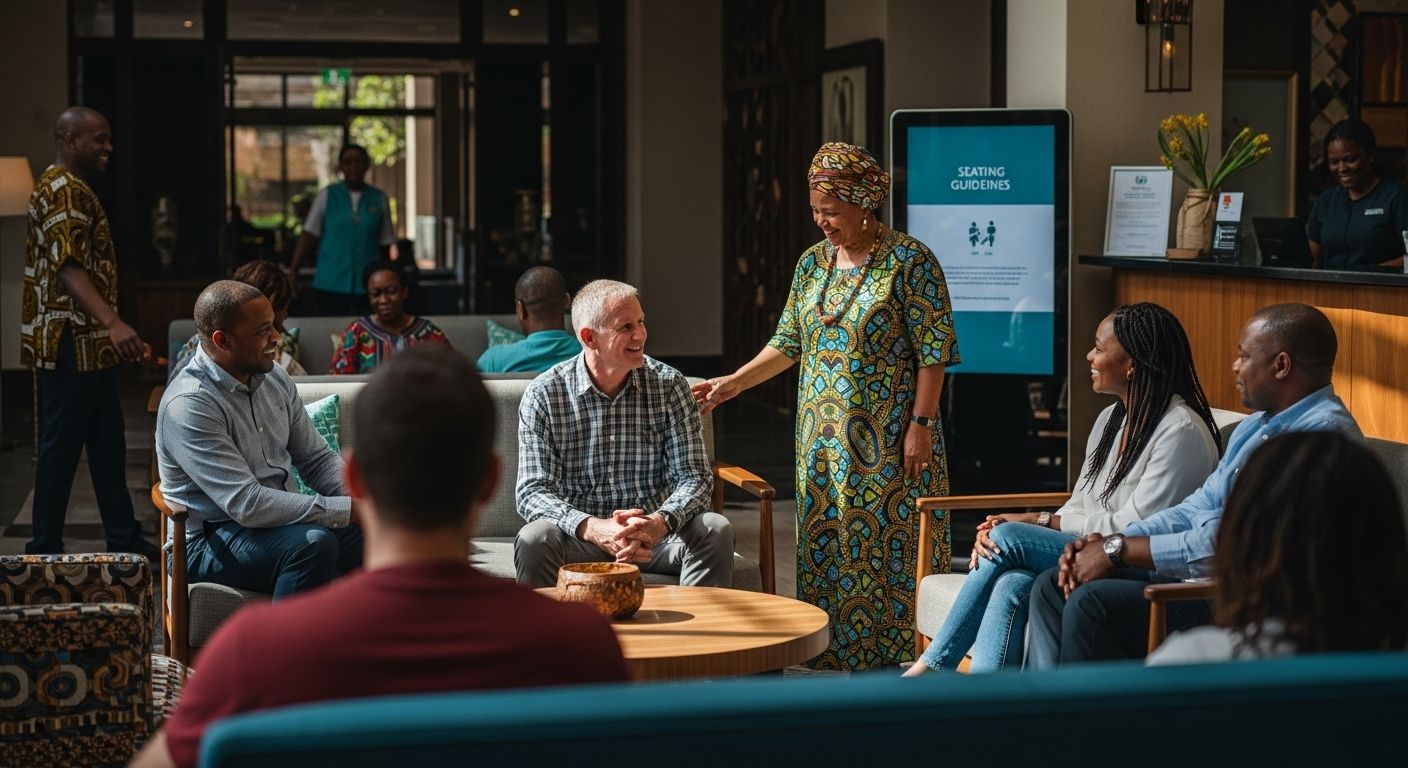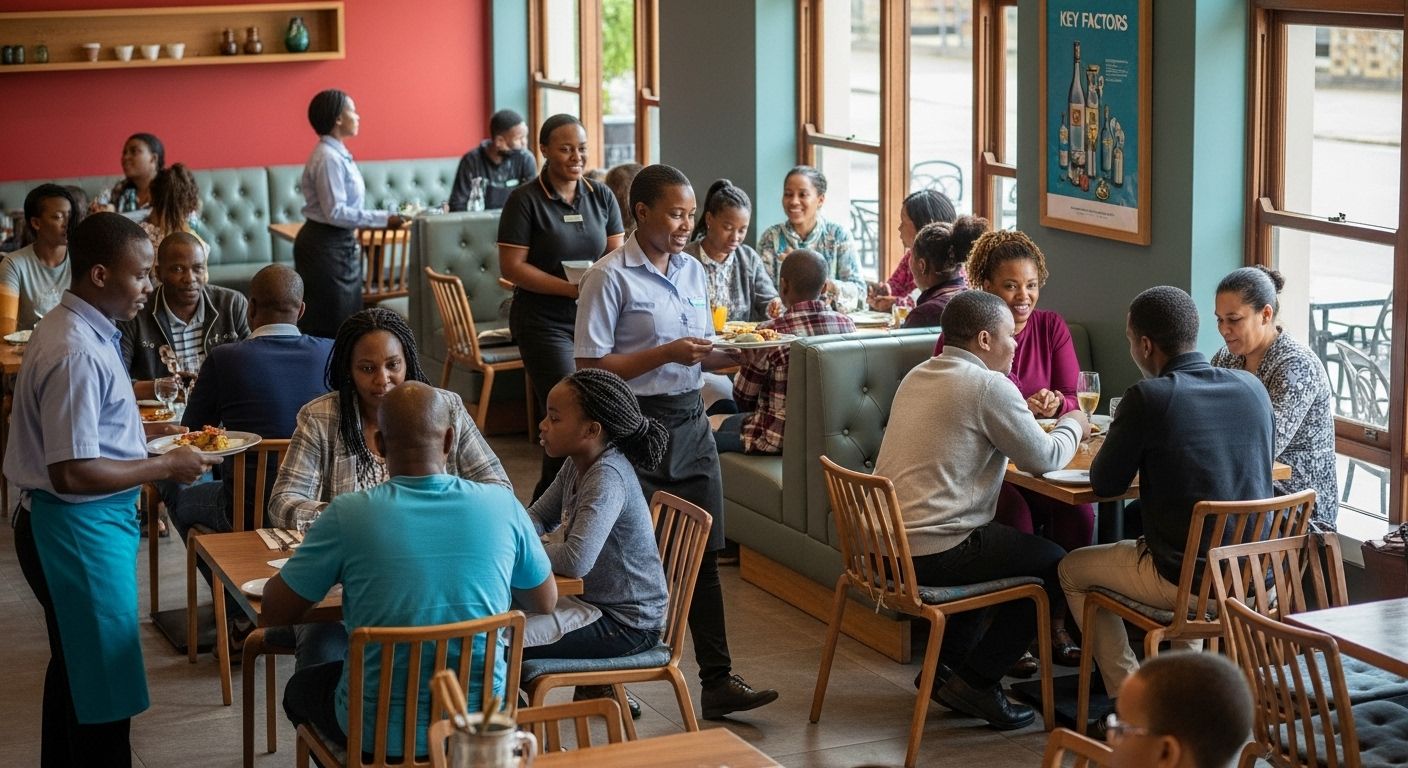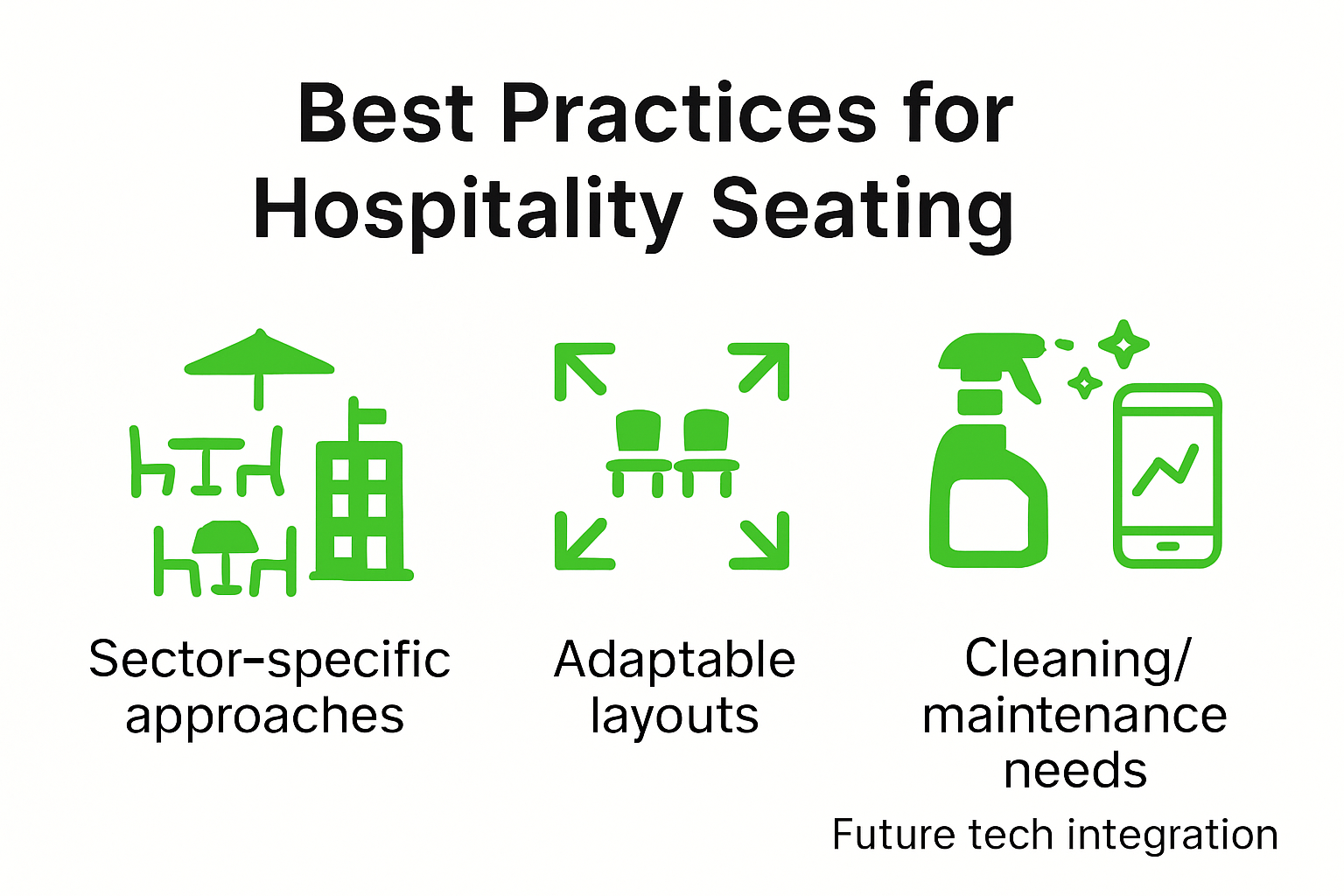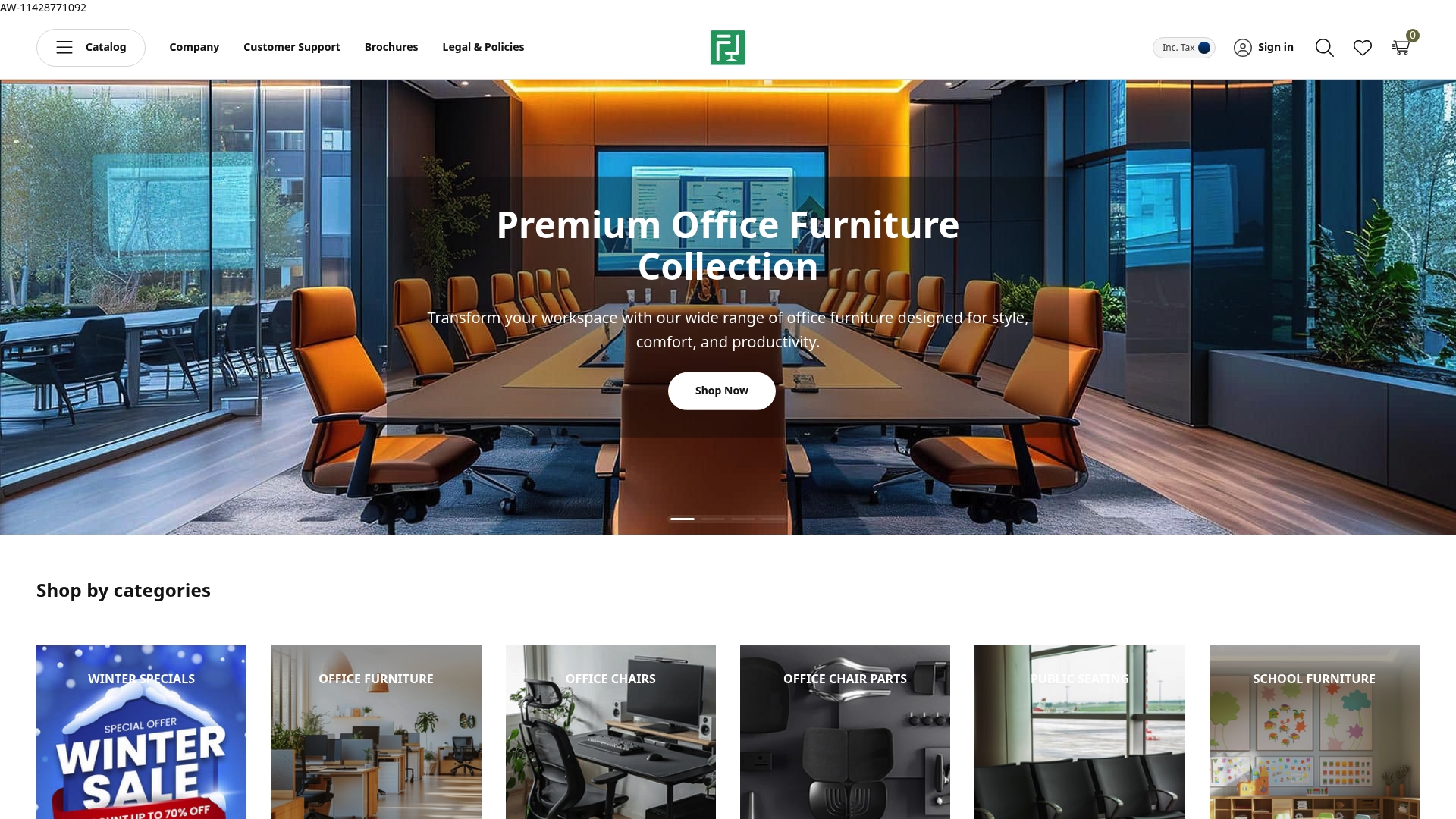Essential Hospitality Seating Guidelines for Southern Africa
Aug 13, 2025
Essential Hospitality Seating Guidelines for Southern Africa

Everyone knows that seating makes or breaks a guest’s experience in Southern African restaurants and hotels. Most owners choose chairs that look smart or match the décor, hoping guests will be comfortable. But here’s the surprise. Comfort and style are just the beginning. A massive 83 percent of hotel guests say that the design and comfort of public area seating shapes their entire experience. Focusing on proper seating is not just about looks or ticking the safety box. It’s the secret to happier guests and smoother operations.
Table of Contents
- Understanding Hospitality Seating Standards
- Key Factors In Choosing The Right Seating
- Compliance, Accessibility, And Local Requirements
- Best Practices For Diverse Southern African Businesses
Quick Summary
| Takeaway | Explanation |
|---|---|
| Prioritize ergonomic design for comfort | Ensure seating accommodates diverse body types to enhance guest comfort in hospitality settings. |
| Ensure compliance with safety regulations | Adhere to safety protocols for seating arrangements to prevent hazards and ensure quick evacuation. |
| Select durable, easy-to-maintain materials | Choose materials that withstand wear and frequent cleaning, maintaining aesthetic appeal in high-traffic areas. |
| Implement flexible seating solutions | Design adaptable seating that can be reconfigured for different events, accommodating various guest needs. |
| Focus on inclusive design for accessibility | Create seating options that support diverse physical abilities while ensuring compliance with national accessibility standards. |
Understanding Hospitality Seating Standards
Hospitality seating standards represent a critical framework for creating functional, safe, and comfortable environments across restaurants, hotels, conference centers, and other hospitality venues in Southern Africa. These guidelines go beyond mere aesthetics, encompassing critical considerations of ergonomics, safety regulations, space optimization, and guest experience.
Ergonomic Design and Comfort Principles
Ergonomic design forms the cornerstone of effective hospitality seating standards. In Southern African hospitality settings, seating must accommodate diverse body types, physical capabilities, and comfort requirements. According to the Business and Institutional Furniture Manufacturers Association (BIFMA), furniture standards emphasize not just aesthetic appeal but fundamental aspects of human physiology and interaction with physical spaces.
Key ergonomic considerations include seat depth, backrest support, armrest positioning, and material selection. Chairs must provide adequate lumbar support, allow for natural body movement, and reduce physical strain during extended sitting periods. This becomes particularly crucial in settings like conference centers, fine dining restaurants, and long-duration hospitality environments where guests might spend significant time seated.
Safety and Regulatory Compliance
Safety represents another paramount aspect of hospitality seating guidelines. Research from the Maine Office of State Fire Marshal highlights critical safety protocols for seating arrangements. For venues accommodating large groups, specific regulations mandate how seats should be positioned, secured, and configured to ensure rapid evacuation and minimize potential hazards.
In Southern African contexts, these guidelines translate to practical implementations such as:
- Ensuring clear pathways between seating arrangements
- Maintaining appropriate distances between chairs to facilitate movement
- Using fire-resistant materials
- Securing furniture in high-traffic or potentially unstable environments
Adaptive Seating Strategies
Modern hospitality seating standards recognize the importance of flexibility and adaptability. Venues must design seating solutions that can be easily reconfigured for different events, accommodate varying group sizes, and provide inclusive options for guests with diverse physical needs.
This adaptive approach involves selecting modular furniture, considering adjustable seating options, and creating spaces that can seamlessly transition between formal conferences, casual dining experiences, and networking events. The goal is to create environments that are not just functional but also dynamic and responsive to changing guest requirements.
By adhering to comprehensive hospitality seating guidelines, Southern African businesses can create environments that prioritize guest comfort, safety, and overall experience. These standards are not merely technical specifications but strategic approaches to designing spaces that welcome, support, and enhance human interaction.
Key Factors in Choosing the Right Seating
Selecting appropriate seating for hospitality environments involves a complex interplay of design, functionality, durability, and guest experience. Southern African hospitality businesses must navigate multiple considerations to create spaces that are both inviting and practical.
Material and Durability Considerations
The selection of seating materials plays a crucial role in long-term performance and maintenance. According to industry research, choosing furniture that balances attractive design with durability and ease of maintenance is paramount. Materials must withstand frequent use, potential spills, and diverse environmental conditions typical in Southern African hospitality settings.
Key material considerations include resistance to wear, ease of cleaning, and ability to maintain aesthetic appeal over time. Fabrics and finishes should be selected not just for visual appeal but for their practical performance. Options like treated leather, high-performance synthetic weaves, and moisture-resistant materials offer excellent durability while maintaining an elegant appearance.
To help decision-makers compare seating materials, here’s a summary of key material considerations mentioned for Southern African hospitality environments.
| Material Type | Durability | Ease of Cleaning | Aesthetic Appeal | Suitability for High-Traffic Areas |
|---|---|---|---|---|
| Treated leather | High | Easy | Elegant | Excellent |
| High-performance synthetic weave | High | Easy | Attractive | Excellent |
| Moisture-resistant materials | High | Easy | Good | Excellent |
| Fabrics (general) | Varies | Varies | Visual | Good (if selected appropriately) |
| Standard wood | Moderate-High | Moderate | Natural/Warm | Moderate |
Functional Design and Space Optimization
Research from Hospitality Design Magazine reveals that 83% of hotel guests consider the comfort and design of public areas critical to their overall experience. This underscores the importance of selecting seating that serves multiple purposes while maximizing available space.
Functional design involves understanding the specific requirements of different hospitality zones. Lobby areas might require modular seating that can be easily reconfigured, while restaurant spaces need chairs that support extended dining experiences. Considerations include:
- Seat width and depth for diverse body types
- Weight capacity and structural integrity
- Mobility and ease of rearrangement
- Compatibility with overall interior design aesthetic
Environmental and Contextual Adaptability
Hospitality seating in Southern Africa must account for unique regional challenges. Outdoor furniture research highlights the importance of selecting materials that can withstand local climate conditions, including intense sunlight, potential humidity, and temperature variations.
Adaptable seating solutions should provide flexibility across different environments. This might involve selecting furniture with weather-resistant properties for outdoor spaces, considering acoustic properties for conference areas, and ensuring comfort across various settings from luxury hotels to casual dining establishments.
Ultimately, choosing the right seating is an investment in guest experience. By carefully evaluating material quality, functional design, and environmental adaptability, Southern African hospitality businesses can create spaces that are not just visually appealing but also practical, comfortable, and reflective of the region’s dynamic hospitality landscape.

Compliance, Accessibility, and Local Requirements
Comprehensive hospitality seating strategies in Southern Africa must navigate a complex landscape of legal requirements, accessibility standards, and inclusive design principles. These guidelines ensure that hospitality spaces are not just functional but equitable and welcoming to all guests, regardless of their physical capabilities.
Legal and National Accessibility Standards
Research from the University of the Witwatersrand highlights the critical importance of national accessibility standards such as SANS 10400 (Part S: Facilities for Persons with Disabilities) and the National Building Regulations. These frameworks establish comprehensive guidelines for creating inclusive public spaces, with specific considerations for seating design and placement.
Key legal requirements encompass multiple aspects of hospitality seating, including:
- Minimum clearance widths for wheelchair accessibility
- Appropriate seat heights and depths for diverse physical needs
- Adequate spacing between seating arrangements to facilitate movement
- Provisions for assistive devices and support structures
Inclusive Design Principles
Inclusive design goes beyond mere legal compliance, representing a holistic approach to creating spaces that accommodate diverse human experiences. This philosophy recognizes that accessibility is not a specialized consideration but a fundamental aspect of thoughtful design.
Implementing inclusive seating strategies involves:
- Providing varied seating options with different heights and support configurations
- Ensuring clear pathways and maneuverability around seating areas
- Incorporating flexible furniture that can be easily adjusted
- Selecting materials and designs that support multiple physical capabilities
Regional Considerations and Cultural Sensitivity
Southern African hospitality environments must also consider unique regional and cultural dynamics when implementing seating guidelines. Different cultural groups may have specific preferences and requirements regarding personal space, seating arrangements, and social interactions.
Considerations include:
- Understanding local cultural norms around personal space
- Recognizing diverse body types and physical characteristics
- Accommodating traditional gathering and interaction patterns
- Balancing standardized accessibility guidelines with cultural context
Below is a checklist table summarising key elements of legal, inclusive, and culturally sensitive seating design in Southern African hospitality as discussed in the article.
| Consideration | Addressed in Article | South African Relevance |
|---|---|---|
| Minimum wheelchair access width | Yes | Yes |
| Appropriate seat heights and depths | Yes | Yes |
| Adequate spacing for movement | Yes | Yes |
| Provisions for assistive devices/support | Yes | Yes |
| Varied seating options (heights/support) | Yes | Yes |
| Regional/cultural sensitivity in arrangement | Yes | Yes |
By integrating comprehensive compliance standards, embracing inclusive design principles, and respecting regional cultural nuances, Southern African hospitality businesses can create seating environments that are not just legally compliant but genuinely welcoming and comfortable for all guests. This approach transforms accessibility from a regulatory requirement into a meaningful expression of hospitality and human dignity.
Best Practices for Diverse Southern African Businesses
Hospitality seating strategies must be nuanced and adaptable across the diverse business landscape of Southern Africa, recognizing the unique operational requirements of different hospitality sectors and regional contexts.
Sector-Specific Seating Approaches
Research from mathematical optimization studies demonstrates the critical importance of developing context-specific seating arrangements that maximize both capacity and guest comfort. Different hospitality environments require tailored approaches that consider spatial constraints, operational dynamics, and specific user needs.
Restaurant environments, for instance, demand flexible seating solutions that can accommodate varying group sizes and dining experiences. Fine dining establishments might prioritize intimate, well-spaced seating, while casual dining venues require more versatile and compact arrangements. Conference centers and corporate hospitality spaces need modular seating that can be quickly reconfigured for different event types.
Operational Efficiency and Adaptability
Clinical practice research emphasizes the importance of a person-centered approach in designing seating environments. For Southern African businesses, this translates to creating spaces that are not just functional but responsive to evolving guest expectations and operational requirements.
Key operational considerations include:

- Ease of cleaning and maintenance
- Quick reconfiguration capabilities
- Durability in high-traffic environments
- Compatibility with technological integration
- Scalability across different venue sizes
Technology and Future-Proofing Strategies
Embracing technological innovations and anticipating future trends is crucial for Southern African hospitality businesses. Seating solutions should be viewed as dynamic systems that can adapt to changing health guidelines, technological integrations, and evolving guest preferences.
Forward-thinking approaches might involve:
- Incorporating smart seating with integrated charging stations
- Designing modular furniture that supports social distancing
- Selecting materials compatible with advanced cleaning technologies
- Creating flexible spaces that can quickly transform between different use cases
By adopting comprehensive, adaptive seating strategies, Southern African hospitality businesses can create environments that are not just compliant with current standards but prepared for future challenges. This approach requires a holistic view that balances aesthetic appeal, functional efficiency, guest comfort, and operational flexibility.
Successful implementation demands continuous learning, willingness to experiment, and a deep understanding of local cultural and business contexts. The most effective seating solutions will be those that seamlessly blend technological innovation, cultural sensitivity, and guest-centric design principles.
Frequently Asked Questions
What are the key ergonomic considerations for hospitality seating?
Ergonomic considerations include seat depth, backrest support, armrest positioning, and material selection. Chairs should provide adequate lumbar support and allow for natural body movement to enhance comfort during extended sitting periods.
Why is safety compliance important in hospitality seating?
Safety compliance is crucial to prevent hazards and ensure rapid evacuation in hospitality settings. It involves clear pathways between seats, maintaining appropriate distances, and using fire-resistant materials to safeguard guests.
How can hospitality businesses adapt their seating for diverse guest needs?
Businesses can implement adaptive seating strategies by selecting modular furniture that can be easily reconfigured, providing varied seating options for different physical capabilities, and ensuring flexible arrangements for different event types.
What material considerations should be prioritized for hospitality seating?
Materials should be durable, easy to maintain, and aesthetically appealing. High-performance options like treated leather and moisture-resistant fabrics are ideal for withstanding wear and frequent cleaning in high-traffic areas.
Upgrade Your Hospitality Spaces with Proven Comfort and Style
Creating welcoming hospitality spaces in Southern Africa requires more than ticking boxes for comfort or safety. You have read about the importance of ergonomic design, compliance with safety regulations, and adaptability for diverse guest needs. But putting these guidelines into practice can often be overwhelming, especially when you need furniture that stands up to daily use, fits a range of body types, and looks good year after year.

Now is your chance to turn seating standards into a guest experience your business can be proud of. Discover how Office Stock can help you achieve true comfort, lasting durability, and flexible layouts for every hospitality scenario. Visit our website to explore premium seating options created for South African workplaces and venues. Do not leave your guest satisfaction to chance. Act today and bring professional comfort and design to every corner of your establishment with trusted solutions from Office Stock.
Recommended
- Ergonet Eco Visitor Chair | Buy Office Chairs Online - Office Stock
- One - Seater Free Standing Polyurethane Auditorium Seating Unit | Buy Office Furniture Online - Office Stock
- Niagara Occasional Chair | Buy Hospitality Furniture Online - Office Stock
- Hexagonal Boardroom Table | Buy Office Furniture Online - Office Stock
